Distributed Temperature Sensing Market Size
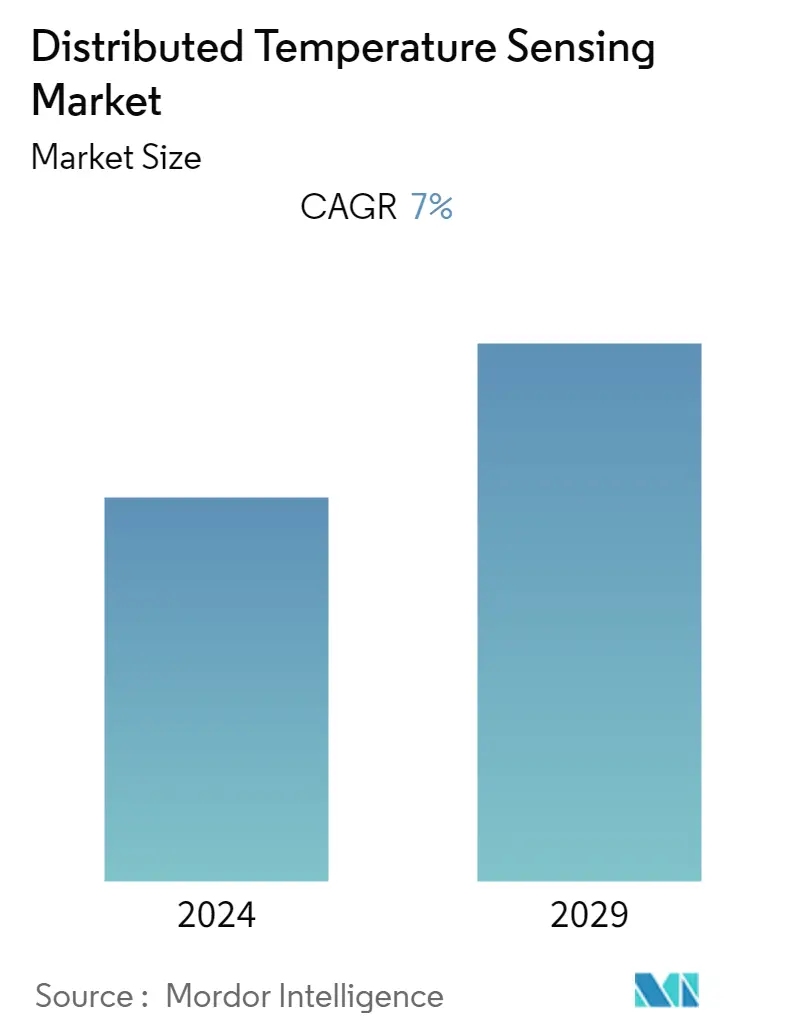
| Study Period | 2019 - 2029 |
| Base Year For Estimation | 2023 |
| Forecast Data Period | 2024 - 2029 |
| CAGR | 7.00 % |
| Fastest Growing Market | Asia Pacific |
| Largest Market | Asia Pacific |
Major Players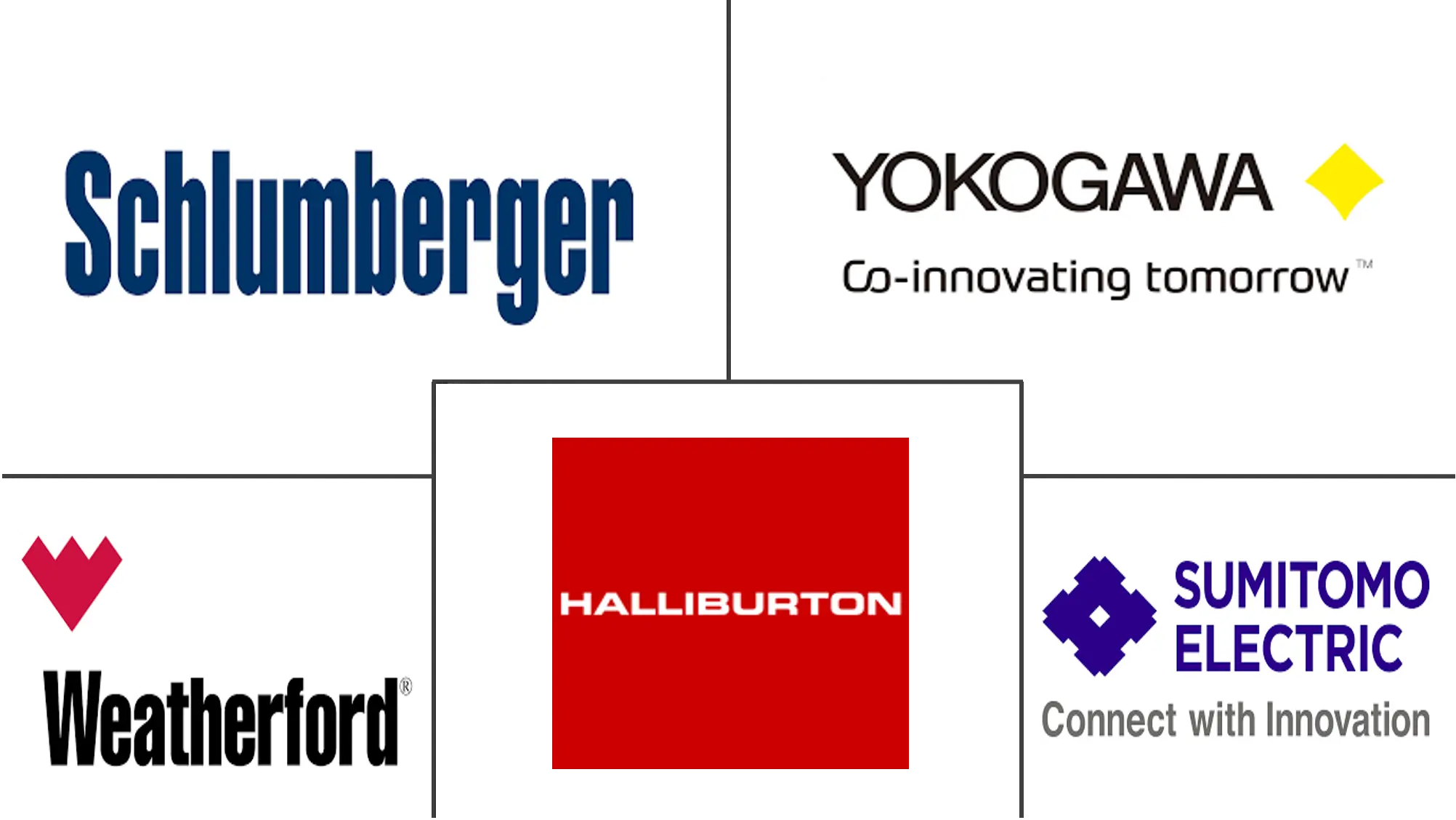
*Disclaimer: Major Players sorted in no particular order |
Distributed Temperature Sensing Market Analysis
The Distributed Temperature Sensing Market is expected to register a CAGR of 7% over the forecast period 2021 to 2026. The deployment of power-efficient and miniaturized sensors along with the rising R&D expenditures by firms are some of the determinants expected to add significantly to the growth of the distributed temperature sensing market. Additionally, the growth of expensive multi-lateral hydraulic fracturing, larger focus on improving oil recovery, and the sustained strength of capital expenditure on thermally enhanced oil recovery systems provide the principal markets for the uptake of distributed temperature sensing.
- The investments in the industry to upgrade current infrastructure to support IoT and automation has been the principal trends impacting the industry, globally. In 2019, multimode fibers held the most significant size of the distributed temperature sensing market. Multimode fibers have a comparatively large light carrying core. These are extensively used in DTS applications and are available in core sizes of 50µm and 62.5µm.
- DTS technology has become an essential part of the oil & gas and power cable monitoring industry. DTS systems help in constant, real-time downhole monitoring to optimize the operational and economic performance of assets. This allows reservoir engineers to understand the injection and production dynamics better and, accordingly, maximize production and improve recovery, subsequently leading to enhanced profits. For instance, in Jan 2019, Yokogawa introduced TDLS8100 probe-type tunable diode laser spectrometer for use in oil, petrochemical, iron & steel, power, and other industries.
- Supportive government policies about safety and increase in industrialization & construction activities, mainly in technologically advancing countries such as China, India, and Brazil, drive the implementation of DTS systems rapidly. For instance, in Nov 2019, AP Sensing collaborated with Energinet, a Danish Transmission Operator, for offering a monitoring solution for the Kriegers Flak transmission system. AP Sensing is monitoring a total of 300 km, utilizing nine Distributed Acoustic Sensing (DAS) units and six Distributed Temperature Sensing (DTS) units. These DTS units with a range of 30-50 km and 1-4 channels are in the application for thermal profiling and to detect thermal anomalies.
- Various countries are extensively participating in formulating strict and obligatory OSH standards and legislations to ensure operational safety. Therefore, increasing safety norms and supportive government policies globally have accelerated the growth of the distributed temperature sensing market. However, higher infrastructure updating costs to maintain security needs stands as a significant challenge for the market.
- The COVID-19 outbreak and recent nationwide lockdown across the globe have effected the manufacturing activities, especially in Asia-Pacific, where a substantial portion of the globally distributed temperature sensors and other semiconductor components are manufactured. Although, in May 2020, many of these manufacturing sites are recovering and started their operations. However, the fluctuation caused in starting four months in 2020 could result in order delays and lead time across the sensors supply chain during 2020. However, the overall market is expected to recover in the long term and expand the scope of distributed temperature sensing across many new applications.
Distributed Temperature Sensing Market Trends
This section covers the major market trends shaping the Distributed Temperature Sensing Market according to our research experts:
Distributed Temperature Sensing Technology to have Major Application in Oil & Gas Production
- The oil and gas segment is anticipated to hold to the largest market share in the forthcoming years. DTS technology has become an indispensable part of the oil & gas industry. The need to know the vertical thermal profile and the real-time temperature is growing, leading to the widespread use of DTS across petrochemical plants, drilling, pipelines, floating-roof tanks/fixed-roof tanks, and others.
- DTS systems assist in continuous, real-time downhole monitoring to optimize the operational and economic performance of assets. This enables reservoir engineers to understand the injection and production dynamics better and, accordingly, maximize production and improve recovery, subsequently leading to improved profits.
- The DTS market has developed rapidly over the years, and DTS measurements are an integral part of the Oil & Gas industry. Because of its secure and reliable use even in hostile environments (HT, HP, H2S, explosion protection area), an increase in the use of DTS measurements can be expected. DTS measurements can be used in a wide range of applications, such as oil wells installation, monitoring pressure vessels, and monitoring for leaks in gas pipelines.
- The progress of unconventional resources, such as heavy oil, shale gas, and oil sands, has been growing in line with the rise in global energy demand. For instance, Yokogawa has developed the DTSX200 distributed temperature sensor (DTS) to facilitate the efficient recovery of unconventional resources by monitoring temperature distribution underground, thus improving the efficiency of natural resource production.
- An example is the application of DTS for gas lift performance monitoring in oil producers by measuring the thermal effects from the flow of lift gas through the valves into the production tubing to determine the active, inactive, and possibly leaking valves, and, also, the unloading depth.
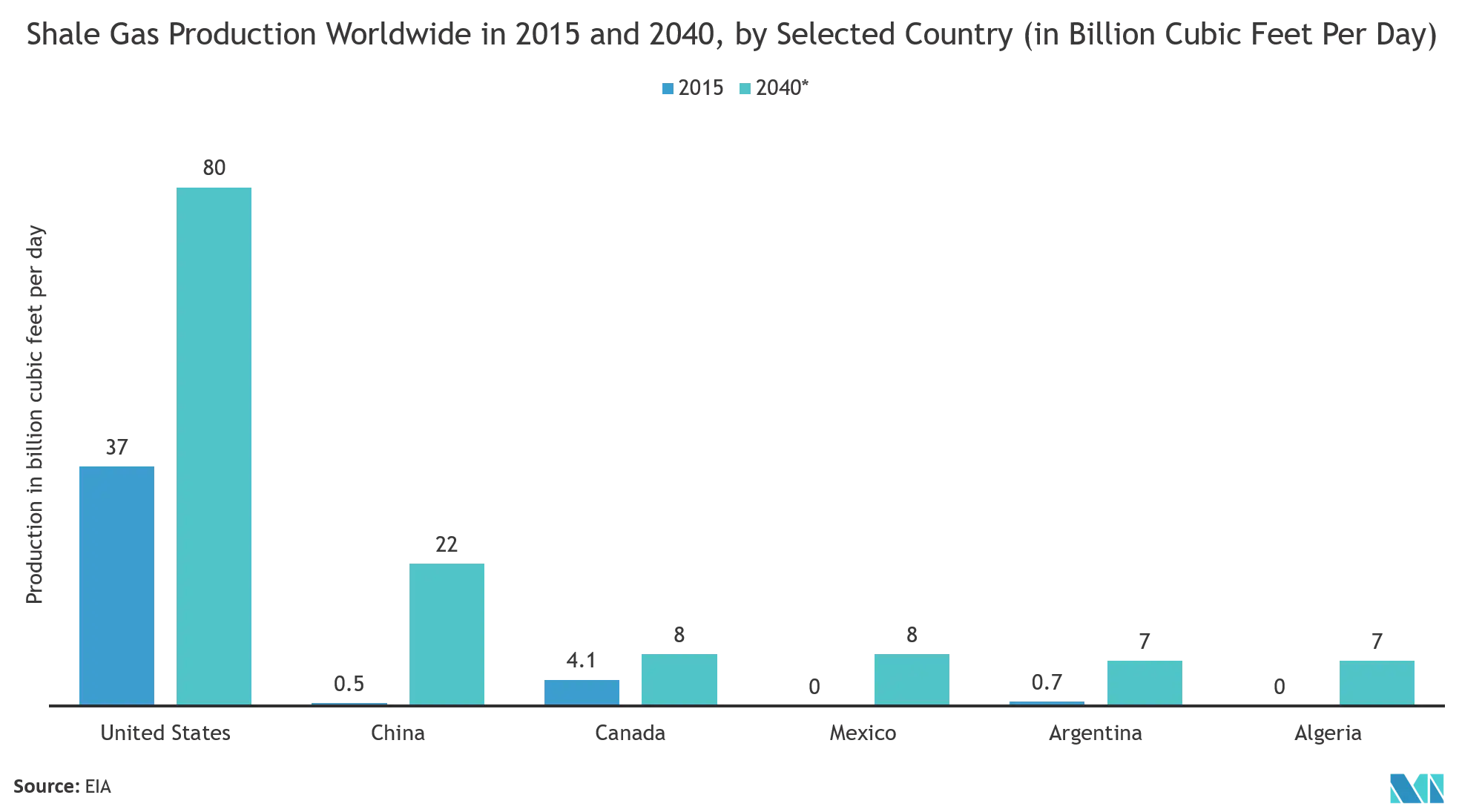
APAC to Dominate the Market during Forecast Period
- Asia-Pacific region is the fastest-growing market for Distributed Temperature Sensing, owing to the established oil & gas production industry and increasing technological advancements in developing countries such as China, Japan, and South Korea.
- The growing construction activities globally and the expanding network of power transmission cables in technologically developing countries in APAC, such as China and India, are adding to the growth of the DTS market in this region.
- China, India, South Korea, and Australia are some of the principal nations contributing to the growth and development of the DTS market in this area. The presence of several oil & gas companies in APAC is also driving the growth of the DTS market.
- Further, many enterprises operating in this region are spending on R&D to develop distributed temperature sensors, that could bring in advancements in the oil & gas industry.
- For instance, TDLS8100 probe-type tunable diode laser spectrometer, developed by Yokogawa Electric Corporation, is used for high pressure and high-temperature gas concentration measurement applications and is intended for use in measuring the flowing gases.
- Further, various firms, such as India, China, and South Korea, are actively trying to strengthen their position by entering into numerous public and private collaborations to leverage distributed temperature sensing advancements for automation and other industrial applications.
- For instance, NKT Photonics inaugurated a new office in Shenzhen for expanding its reach to China. This facility is provided with the latest products from NKT Photonics' ultra-fast laser portfolio and a broad range of high-end measurement and test equipment. This expansion reinforces its presence in China and facilitates further growth.
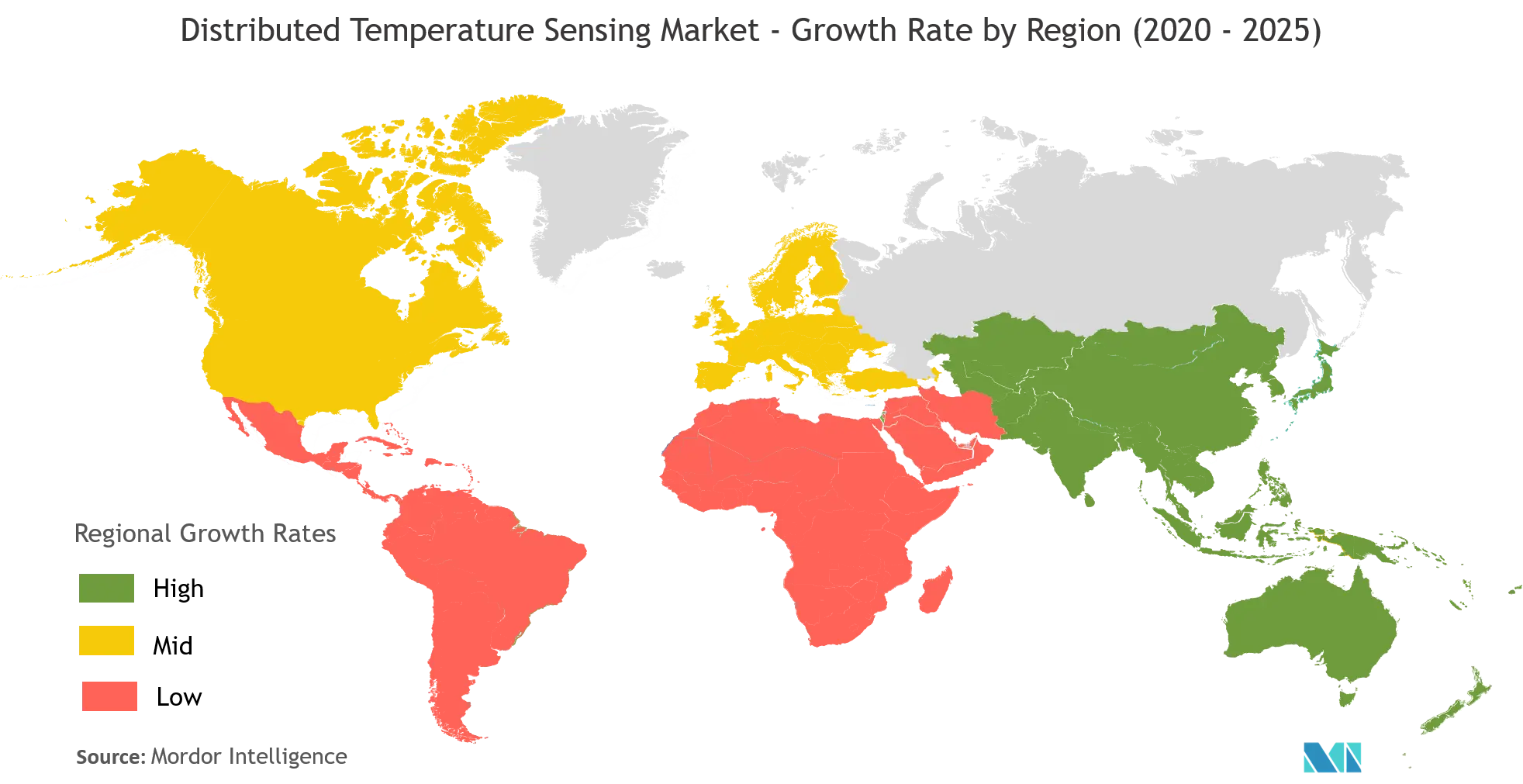
Distributed Temperature Sensing Industry Overview
The distributed temperature sensing market is moderately competitive in nature and is marked with the presence of several international and domestic key players. Vendors in the DTS market have the need to innovate and adapt to the shifting business requirements to keep up with the rising competition. The vendors operate in a competitive environment and there is a constant need for innovations due to the rapid technological changes.
- Feb 2020 - Schlumberger announced the opening of a world-class manufacturing center in King Salman Energy Park (SPARK). The center will manufacture various technologies including liner hangers and packers and valve technologies, such as GROVE valves and ORBIT rising stem ball valves, to help improve the efficiency of oil and gas operations in the Kingdom and neighboring countries.
- Nov 2019 - NKT Photonics expanded its reach to the United States by opening a new facility in Boston. This facility not only serves as sales and support but it also accommodates an application & service laboratory and state-of-art single-frequency fiber laser production.
Distributed Temperature Sensing Market Leaders
-
Schlumberger Limited
-
Halliburton Company
-
Yokogawa Electric Corporation
-
Weatherford International PLC
-
Sumitomo Electric Industries, Ltd.
*Disclaimer: Major Players sorted in no particular order
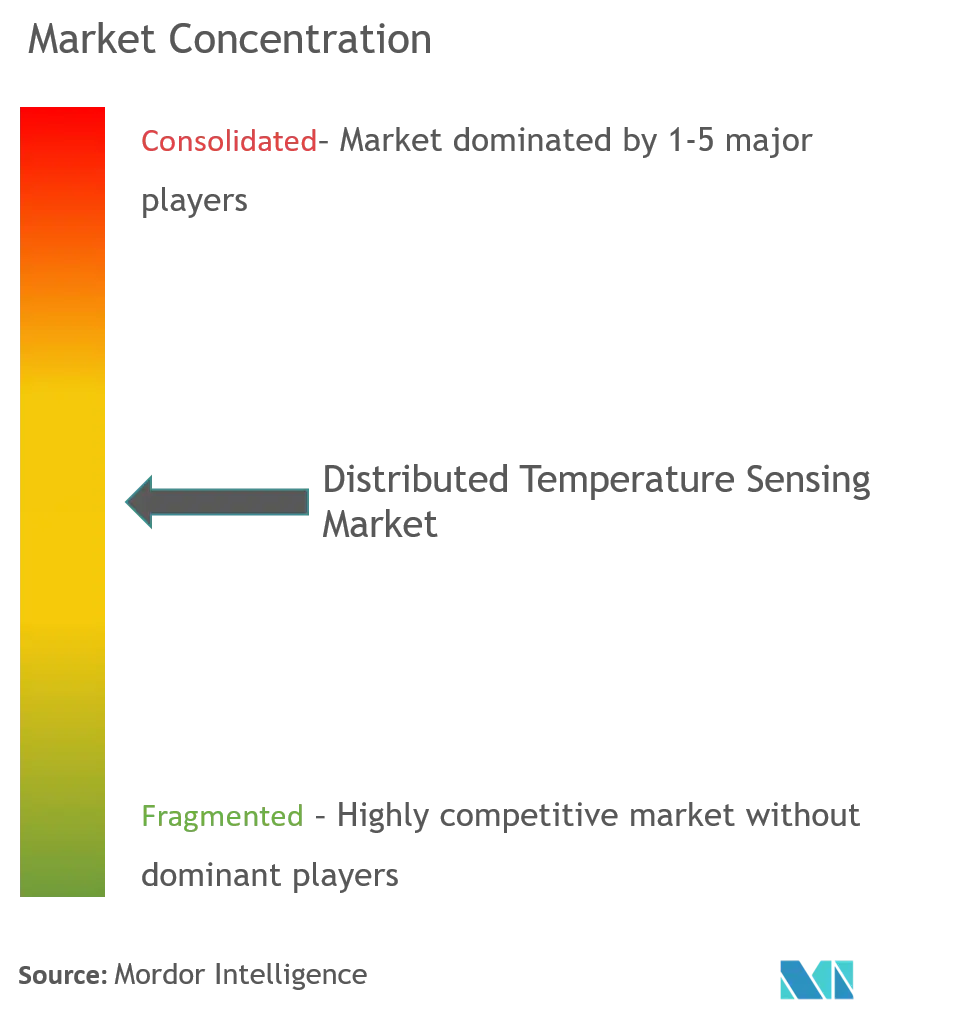
Distributed Temperature Sensing Market Report - Table of Contents
1. INTRODUCTION
- 1.1 Study Deliverables
- 1.2 Study Assumptions
- 1.3 Scope of the Study
2. RESEARCH METHODOLOGY
3. EXECUTIVE SUMMARY
4. MARKET DYNAMICS
- 4.1 Market Overview
- 4.2 Introduction to Market Drivers and Restraints
-
4.3 Market Drivers
- 4.3.1 Trustworthiness of DTS Systems/Sensors for Sensing & Monitoring Applications in Severe Environments
- 4.3.2 Growing Need for Labor Safety at Working Sites
- 4.3.3 Rising Applications in the Oil & Gas Industry
-
4.4 Market Restraints
- 4.4.1 Optical Cables are Inclined to Physical Damage
- 4.4.2 High Costs Associated With DTS Systems
- 4.5 Industry Value Chain Analysis
-
4.6 Industry Attractiveness - Porter's Five Force Analysis
- 4.6.1 Threat of New Entrants
- 4.6.2 Bargaining Power of Buyers/Consumers
- 4.6.3 Bargaining Power of Suppliers
- 4.6.4 Threat of Substitute Products
- 4.6.5 Intensity of Competitive Rivalry
- 4.7 Impact of COVID-19 on Distributed Temperature Sensing Market in India
5. MARKET SEGMENTATION
-
5.1 By Fiber Type
- 5.1.1 Single-mode fiber
- 5.1.2 Multi-mode fiber
-
5.2 By Application
- 5.2.1 Oil & Gas Production
- 5.2.2 Power Cable Monitoring
- 5.2.3 Process & Pipeline Monitoring
- 5.2.4 Fire Detection
- 5.2.5 Environmental Monitoring
-
5.3 Geography
- 5.3.1 North America
- 5.3.2 Europe
- 5.3.3 Asia-Pacific
- 5.3.4 Rest of the World
6. COMPETITIVE LANDSCAPE
-
6.1 Company Profiles
- 6.1.1 Schlumberger Limited
- 6.1.2 Halliburton Company
- 6.1.3 Yokogawa Electric Corporation
- 6.1.4 Weatherford International PLC
- 6.1.5 Sumitomo Electric Industries, Ltd.
- 6.1.6 Banner Engineering Corp
- 6.1.7 AP Sensing GmbH
- 6.1.8 OMICRON Electronics GmbH
- 6.1.9 OFS Fitel, LLC
- 6.1.10 Bandweaver Technologies
- 6.1.11 GESO GmbH & Co.
- 6.1.12 NKT Photonics
- 6.1.13 Omicron Electronics GmbH
- 6.1.14 Micron Optics, Inc.
- 6.1.15 Sensornet Limited
- *List Not Exhaustive
7. INVESTMENT ANALYSIS
8. MARKET OPPORTUNITIES AND FUTURE TRENDS
** Subject To AvailablityDistributed Temperature Sensing Industry Segmentation
Distributed temperature sensing is a real-time temperature measurement system that continually monitors the complete cable covering all the critical measurement points. DTS includes optical fibers and is optoelectronic equipment. The continuous sensing ability for temperature changes makes it the principal feature of DTS. DTS is explicit in determining temperature over long distances, which will encourage the adoption of DTS systems during the forecast period.
| By Fiber Type | Single-mode fiber |
| Multi-mode fiber | |
| By Application | Oil & Gas Production |
| Power Cable Monitoring | |
| Process & Pipeline Monitoring | |
| Fire Detection | |
| Environmental Monitoring | |
| Geography | North America |
| Europe | |
| Asia-Pacific | |
| Rest of the World |
Distributed Temperature Sensing Market Research FAQs
What is the current Distributed Temperature Sensing Market size?
The Distributed Temperature Sensing Market is projected to register a CAGR of 7% during the forecast period (2024-2029)
Who are the key players in Distributed Temperature Sensing Market?
Schlumberger Limited, Halliburton Company, Yokogawa Electric Corporation, Weatherford International PLC and Sumitomo Electric Industries, Ltd. are the major companies operating in the Distributed Temperature Sensing Market.
Which is the fastest growing region in Distributed Temperature Sensing Market?
Asia Pacific is estimated to grow at the highest CAGR over the forecast period (2024-2029).
Which region has the biggest share in Distributed Temperature Sensing Market?
In 2024, the Asia Pacific accounts for the largest market share in Distributed Temperature Sensing Market.
What years does this Distributed Temperature Sensing Market cover?
The report covers the Distributed Temperature Sensing Market historical market size for years: 2019, 2020, 2021, 2022 and 2023. The report also forecasts the Distributed Temperature Sensing Market size for years: 2024, 2025, 2026, 2027, 2028 and 2029.
Distributed Temperature Sensing Industry Report
Statistics for the 2024 Distributed Temperature Sensing market share, size and revenue growth rate, created by Mordor Intelligence™ Industry Reports. Distributed Temperature Sensing analysis includes a market forecast outlook 2029 and historical overview. Get a sample of this industry analysis as a free report PDF download.



